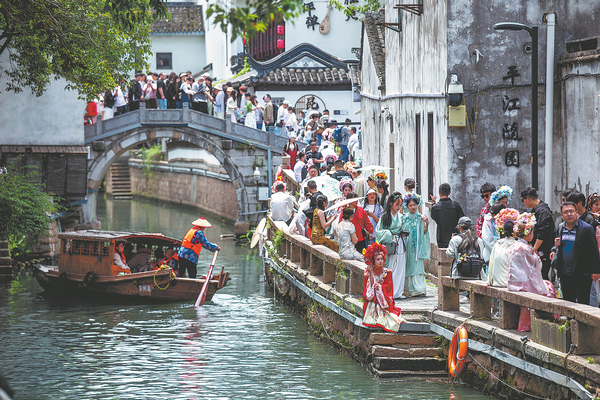

Ruan Yisan first became involved in the planning for the Pingjiang Historic District as far back as the late 1980s. Later, in the early 2000s, when work on the project, long in the hatching, was expedited, Ruan Yisan, who taught urban planning at Shanghai's Tongji University, started to spend more and more time in Suzhou.
"As an underwriter of the project, my brother makes sure that it's an ongoing process. What he has been trying to do consistently is to retain the area's many layers of history, without turning it into a showpiece trapped in a time capsule," says Ruan Yongsan, who, at the time working with Suzhou's housing and urban-rural development bureau, saw his own work intersecting with that of his brother's.
"Around 20,000 people are today living inside the historical district, of whom 60 percent are longstanding residents," continues Ruan Yongsan.
According to Pei, the historical district received a record 28.35 million visits last year.
It's true that the neighborhoods are no longer as quiet as they once were, yet, despite the availability of tap water, some still prefer the time-honored ritual of hoisting water from the depths of a well, knowing all too perfectly that the Pingjiang Road was once named "Shi Quan Li", meaning "Ten Well Lane".
"'Row, row, row your boat, to grandma's bridge …' that's the rhyme I grew up singing," says Ruan Yisan. "As long as the waters and bridges are here, we keep the memory of our grandmothers alive."
Contact the writer at zhaoxu@chinadaily.com.cn